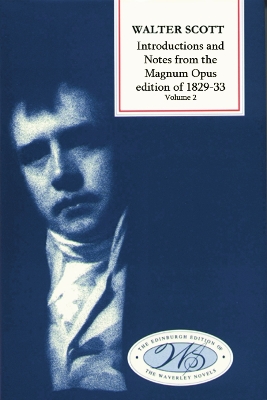Edinburgh Edition of the Waverley Novels
2 total works
Between 1829 and 1833 the first complete edition of Scott's fiction appeared, in 48 volumes issued one a month, each illustrated with two engravings, and with introductions and notes by Scott himself. The Magnum Opus, as it was familiarly called, was a project which aimed to reduce the enormous debt of over 126,000 which landed on Scott during the financial crisis of 1825-26, but it was much more than an exercise in book-making. Scott's introductions are semi-autobiographical essays in which he muses on his own art and the circumstances which gave rise to each of his works of fiction. His notes illustrate his text, sometimes with simple glosses, sometimes by quotations from historical sources, but most strikingly with further narratives which parallel rather than explain incidents and situations in the fiction.These volumes constitute the first systematic representation of Scott's contributions to his last great edition, the edition which defined the final shape of Scott's fiction for the nineteenth century. They conclude the publication of the Edinburgh Edition of the Waverley Novels, and as they include addenda and corrigenda covering the whole 28 volumes of Scott's fiction in the EEWN, they are an indispensable conclusion to the set. But above all they illustrate the parabolic imagination of the man who made the historical novel an intellectual force.

